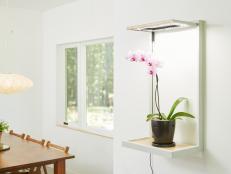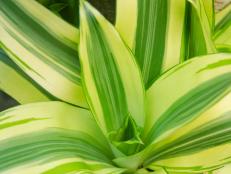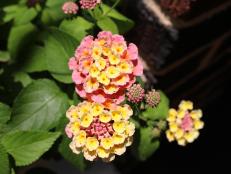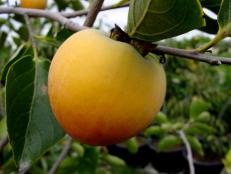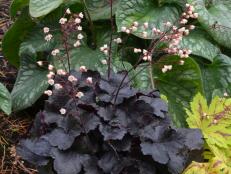Sizing Up Plants

Photo by Andrew Sisk
Should you buy that cute little shrub in a one-gallon pot or the more mature one in a three-gallon container? How to select the right size puzzles many gardeners, and at nurseries there is a baffling range of sizes available. Yet, getting the right size can help you achieve the landscape you want and at a cost you can afford.
Common container sizes range from 2-inch pots to 20-gallon tubs. The size you choose depends on the type and number of plants you need, the spot where the plants will live, your budget, and whether you intend to haul the plants yourself or have them delivered. Keep in mind the weight of the plants you buy: a tree in a 20-gallon container can weigh several hundred pounds.
- Most 2- to 4-inch pots weigh only a few ounces, and these little plastic containers very often represent the best buy for those who are shopping for herbs, vegetable transplants, plants for pots on the patio and bedding plants. Gardening by the Yard host Paul James bought a one-gallon container of sweet woodruff, one of his favorite shade-tolerant ground covers, priced at $7.99. He also found 2-inch pots in the herb section for only $1.99. Since he needed several plants, and since the sweet woodruff grows and spreads quickly, he opted for the smaller size and saved a bundle.
- Multi-packs have become extremely popular in recent years, and they too can save you money. If two or three tomato plants are all you want, however, and all you can find are six-packs, this means you're forced to buy two or three times more than you need. Plus, sometimes the six-pack has only four or five healthy plants. On the other hand, a six-pack may occasionally hold seven or eight healthy plants, which is another bargain.
- One of James' favorite container sizes is the 4-inch pot. This size is reasonably priced, and plants grown in them are less likely to suffer from transplant shock than those in larger containers. Most importantly, they're the perfect size for pocket planting. Sticking plants in small, bare spots throughout an established bed or in cramped areas beneath canopies of trees where established roots don't allow much digging room.
- The most popular size is the one-gallon container, and just about every plant is available in this size, including annuals, perennials, trees and shrubs. Regardless of what plant they hold, they usually cost from $6 to $10. These small pots are easy to move and transplant.
- One-gallon container plants are the best bargain if you have a lot of planting to do. For example, a one-gallon hydrangea sells for $10 and a three-gallon version sells for $25. During one good growing season, the smaller one will catch up to the larger one in terms of overall size. If you want an instant specimen, then you may want to buy the three-gallon size. But if you plan on planting a dozen or so, then the one-gallon size will save you money.
For slow-growers such as mugho pines, you may want to opt for the larger size, even though the larger sizes cost a lot more. The difference may be worth it, because it may be years before the one-gallon reaches the same size as the three-gallon shrub.
If your intent is to watch the plant grow over time (even if it grows slowly), then consider a small container over a larger one. This will allow you to appreciate the plant more and save money.
Before you buy, check for these problems:
- If plants have been in the containers for a while, they may be root-bound. Make sure to inspect the root system before you buy, and loosen the roots at planting time or score them with a knife to stimulate new root growth.
- Another problem with container plants of all sizes is that they've been overstimulated by artificial light, too much fertilizer or a combination of the two. It's a trick growers use to make the plants more attractive once they arrive at the nursery, but it can backfire on you once you get the plant home. If you see a plant that's blooming long before it should be or whose growth appears to be way ahead of its time, beware! Even though the plant may look great, chances are it may not adapt well to the more realistic growing conditions found in your landscape.







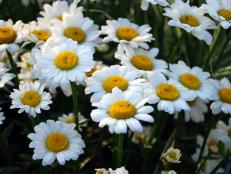
![Homegrown variety of winter squash. Homegrown winter squash. 195956_3603429601142_787136137_n[2].jpg](http://hgtvhome.sndimg.com/content/dam/images/grdn/fullset/2014/2/7/0/195956-3603429601142-787136137-n-2.jpg.rend.hgtvcom.231.174.suffix/1452646912247.jpeg)
